Matthew S. Williams's Blog, page 30
October 30, 2014
Aerospace Travel: Los Angeles to Tokyo in One Hour
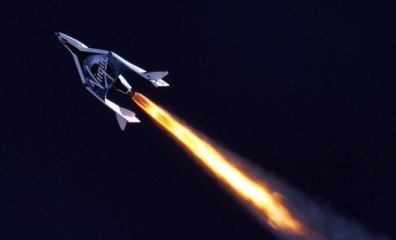 Given my busy schedule of late, some stories have been sitting in my stack for some time and I haven’t been able to write about them. But one’s like this are too cool to pass up, so here’s a belated acknowledgement. It seems that Virgin Galactic, having now demonstrated its ability to conduct aerospace tourism, has decided to enter into phase two of its plans for the future: aerospace travel!
Given my busy schedule of late, some stories have been sitting in my stack for some time and I haven’t been able to write about them. But one’s like this are too cool to pass up, so here’s a belated acknowledgement. It seems that Virgin Galactic, having now demonstrated its ability to conduct aerospace tourism, has decided to enter into phase two of its plans for the future: aerospace travel!
In the scenario they are proposing, their planes would fly customers from Los Angeles to Tokyo, and the transit would take one hour. The takeoff system would be similar to the midair launch the company uses now with the SpaceShipTwo. Basically, a large plane flies the spacecraft off the ground, drops it in midair, a hybrid rocket engine ignites, and the spacecraft ascends into lower orbit.
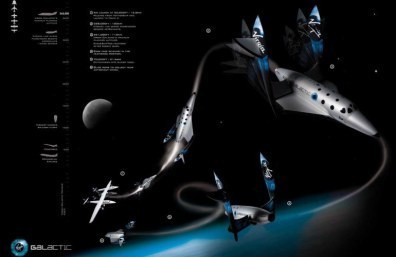 A system like this would allow patrons to fly from the West Coast to Japan in an hour, or from the United Kingdom to Australia in two hours. This is according to statements made by Virgin Galactic’s CEO, George Whitesides, back in September at a company event at New York City’s Museum of Natural History:
A system like this would allow patrons to fly from the West Coast to Japan in an hour, or from the United Kingdom to Australia in two hours. This is according to statements made by Virgin Galactic’s CEO, George Whitesides, back in September at a company event at New York City’s Museum of Natural History:
You can imagine a SpaceShipThree or a SpaceShipFour going outside the atmosphere, then coming back down outside an urban area and landing. We don’t have to accept the status quo. We can imagine a vehicle using liquid oxygen or liquid hydrogen to get us across the Pacific in an hour. You could do that.
For those following Branson’s exploits, this announcement should come as no surprise. For years, he has been attempting to create a supersonic airline of his own. But when a paradigm-shifting idea like “point-to-point suborbital space transportation” becomes possible, he began to sets his sights a little higher (so to speak).
 Naturally, there are a few things that need to be worked out and tested before that’s possible, but it’s entirely within the realm of possibility. In fact, the European Space Agency has been researching the idea and claimed that SpaceShipOne and SpaceShipTwo are the most promising space launch mechanisms they’ve seen to date.
Naturally, there are a few things that need to be worked out and tested before that’s possible, but it’s entirely within the realm of possibility. In fact, the European Space Agency has been researching the idea and claimed that SpaceShipOne and SpaceShipTwo are the most promising space launch mechanisms they’ve seen to date.
Naturally, there is the nagging question of cost. If aerospace travel does become feasible, who exactly will be able to afford it? So far, Virgin Galactic’s suborbital spaceflight have attracted hundreds of customers, but at a cost of $250,000 per head. It seems unlikely that these same people would pay a quarter of a million dollars just to travel halfway around the world. And some experts maintain that the industry will fail strictly because of the costs involved.
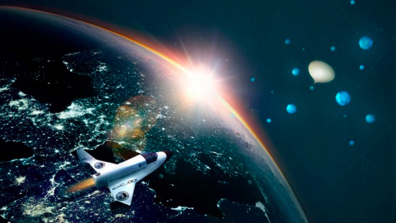 Derek Webber, is one such person. As the executive director of Spaceport Associates, he wrote a paper in 2008 that explored the idea:
Derek Webber, is one such person. As the executive director of Spaceport Associates, he wrote a paper in 2008 that explored the idea:
Credible market studies have not been done, or at least published. The optimum technical design has not been established. The ground infrastructure is not in place… Price levels are uncertain. It is not even clear whether such flights are best characterized as tourism or as transportation; whether the passengers would be primarily tourists or business persons on urgent trips.
Nevertheless, these doubts are doing nothing to stem the flow of investment and research being made by aerospace organizations and companies. For years, KLM Royal Dutch Airlines – the national air carrier of the Netherlands – has been developing a rocket-powered sub-orbital craft of its own. California-based XCOR Aerospace also has the Lynx – a hypersonic plane that could fly between New York and Tokyo in just 90 minutes.
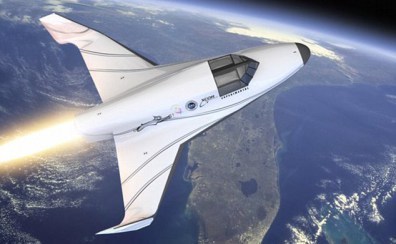 Reaction Engines Limited is also developing the Skylon hypersonic engine for commercial spacecraft, much in the same way that Boeing and NASA are developing the X-37B space plane. While these efforts are aimed at creating reusable spacecraft that could deploy satellites and deliver crew and supplies into orbit, they are also laying the groundwork for commercial transportation that takes people into orbit.
Reaction Engines Limited is also developing the Skylon hypersonic engine for commercial spacecraft, much in the same way that Boeing and NASA are developing the X-37B space plane. While these efforts are aimed at creating reusable spacecraft that could deploy satellites and deliver crew and supplies into orbit, they are also laying the groundwork for commercial transportation that takes people into orbit.
Meanwhile, DARPA and the US Marine Corps have been working on developing their own point-to-point rockets for delivering supplies and people for roughly a decade now and the Federal Aviation Administration’s 2010 report noted that:
[the] potential for the rapid global transport of passengers and the fast distribution of goods and services make point-to-point transportation an attractive space technology concept worth exploiting.
So while a price breakdown may be lacking, and the expected costs limiting, the technology is still in its infancy and it seems likely that the future of transportation lies in space. Beyond rapid transit and space tourism, it may very well be how airlines ferry people to and from their destinations in the not-too-distant future.
Source: motherboard.vice.com


October 29, 2014
Rebooting An Idea – Reciprocity
 For awhile now, I’ve been tinkering with a story idea known as Apocrypha. It first came to me back in 2009 when I decided to move away from space opera and into more hard science fiction. I even decided to relaunch the idea a few months back, which would be the second time I decided to reboot the idea. And now, I’m rebooting it yet again, but with one major change.
For awhile now, I’ve been tinkering with a story idea known as Apocrypha. It first came to me back in 2009 when I decided to move away from space opera and into more hard science fiction. I even decided to relaunch the idea a few months back, which would be the second time I decided to reboot the idea. And now, I’m rebooting it yet again, but with one major change.
Basically, I’ve re-conceived the plot to focus on a world set in 2030, where China’s Communist system has collapsed, Russia continues to exist as a semi-fascist state, the internet of things is in full swing, and several different forces are competing for control over which direction the future takes. Some want to rehash old rivalries, while others want to bring about a revolution in computing that will dissolve all boundaries.
 The name of the new story is Reciprocity, which is taken from the Chinese concept of Bao Ying. I chose this as a name because while researching Chinese ancestral religion, I came across a central theme which states that the fate of all human beings is determined by cosmic reciprocity.
The name of the new story is Reciprocity, which is taken from the Chinese concept of Bao Ying. I chose this as a name because while researching Chinese ancestral religion, I came across a central theme which states that the fate of all human beings is determined by cosmic reciprocity.
The concept of Bao Ying is also expressed as follows in various Zhou-Dynasty texts:
On the doer of good, heaven sends down all blessings, and on the doer of evil, he sends down all calamities.
This belief incorporates two separate elements:
Ming yun: which loosely translated, means personal destiny. Whereas ming is “life” or “right”, the word yun defines “circumstance” and “individual choice”. In the Chinese ancestral faith, it is perceived as something both fixed (bound by fate) and flexible (implying choice and free will).
Yuan fen: which means “fateful coincidence”, describing good and bad possibilities and potential relationships. Here too, the elements of fate and choice intersect, with good and bad casualties being assigned usually to one or the other.
Both concepts are linked, because what appears on the surface to be chance events (for better or worse), are part of the deeper rhythm that shapes personal life based on how destiny is directed. Given the fact that I thought the story should focus on China, this concept spoke to me.
 Originally, Apocrypha was all about a group of apocalyptic terrorists who have ties to various anti-modernist, anti-western groups who try to use a Chinese cyber-virus named Hǔnluàn (Chinese for chaos) to accomplish their goals. However, this idea wasn’t panning out in a few ways. Mainly, the antagonists didn’t seem believable to me, especially where their motivations are concerned.
Originally, Apocrypha was all about a group of apocalyptic terrorists who have ties to various anti-modernist, anti-western groups who try to use a Chinese cyber-virus named Hǔnluàn (Chinese for chaos) to accomplish their goals. However, this idea wasn’t panning out in a few ways. Mainly, the antagonists didn’t seem believable to me, especially where their motivations are concerned.
But after talking it over with a friend and neighbor, I came to realize that the real focus of the story was China – or rather, how the aftermath of Maoism would affect the country and the global balance of power. In this sense, the antagonists were much more believable if they themselves were Chinese ex-pats, people who were unhappy with the current world order and wanted to change it.
 Borrowing from Russia’s post-Communist experience, I basically foresee China going through many of the same problems in the near future. First, the state would find itself under a great deal of pressure due to ongoing demands for reform, pro-democracy protests, and the memory of Tienanmen Square. And I also imagine the health effects of air pollution and cancer farms would also add to the resistance.
Borrowing from Russia’s post-Communist experience, I basically foresee China going through many of the same problems in the near future. First, the state would find itself under a great deal of pressure due to ongoing demands for reform, pro-democracy protests, and the memory of Tienanmen Square. And I also imagine the health effects of air pollution and cancer farms would also add to the resistance.
But by the 2020s, I expect that the country will also be reeling from the effects of drought, famine, and the destruction of water tables. And then there would be the collapse of the economy caused by the implosion of the real estate bubble – a very likely possibility – which would end the Party’s long history of buying loyalty with economic growth. At that point, the Party would officially fall under the weight of its own corruption, bankruptcy and failure.
 Ten years later, China would find itself in a state of serious change and facing an ambiguous future. On the one hand, it would remain a major power economically and militarily, but would still be suffering from lingering environmental damage and uneven development. As a result, it would find itself vulnerable to quasi-fascist politicians looking to exploit people’s uncertainty and funnel it towards a revisionist agenda.
Ten years later, China would find itself in a state of serious change and facing an ambiguous future. On the one hand, it would remain a major power economically and militarily, but would still be suffering from lingering environmental damage and uneven development. As a result, it would find itself vulnerable to quasi-fascist politicians looking to exploit people’s uncertainty and funnel it towards a revisionist agenda.
I think you’ll agree, this idea makes way more sense than its predecessor. What’s more, it would give me a chance to cover a big angle I was looking at, which was the involvement of former members of the People’s Liberation Army Cyberwarfare Division (aka. Unit 61398). Assuming that said people were out a job in the not-too-distant future, they would be seriously upset and willing to help in a malicious plot.
What do you think? Too political? Or does it have potential?


October 27, 2014
New Articles and Apologies
 Let’s start with the apologies. I’m very sorry for the prolonged absence of late, and I trust that people actually noticed I haven’t been around ;) But both my day and my side job have both been very busy and have left me mentally and physically taxed by the end of the day. However, I do have things to show for it, mainly in the form of a new list of articles that were recently published on both Universe Today and HeroX.
Let’s start with the apologies. I’m very sorry for the prolonged absence of late, and I trust that people actually noticed I haven’t been around ;) But both my day and my side job have both been very busy and have left me mentally and physically taxed by the end of the day. However, I do have things to show for it, mainly in the form of a new list of articles that were recently published on both Universe Today and HeroX.
I’ve taken to posting the new entries on their respective pages (over on the right there). However, if you’re like me, you don’t bother to check these out much and would rather be notified if something new is happening. And the way I see it, a post now and again that contains the links to all the latest is something people won’t mind hearing about (as opposed to being notified every time one does!)
So here they are, in order of publication:
Small Spacecraft Ejected from ISS Will Provide Same-Day, On-Demand Delivery – Basically, the ISS is getting a small fleet of return vehicles that will allow them to deliver samples back to Earth in less than 24 hours. This will help research and experiments quite a bit, and could also open the way for commercial use of the ISS’s National Lab.
Make a Deal for Land on the Moon – This one was not only fun to write, it contains a cautionary tale worth sharing. No matter what some realtors may tell you, there’s absolutely no way to buy land on the Moon… yet! However, given the way that commercial aerospace and space industries are heating up, this may soon change.
HeroX News: The Promise of Solar Power – This is probably the longest article I’ve written for either publication of late. It deals with recent innovations that are causing solar power to break its own the efficiency limits and usher in an age of renewable energy. And none too soon either!


October 24, 2014
Some New Articles from HeroX
 I know, I promised I would stop doing this. But the other publication I started writing for – HeroX – now has two new articles written by yours truly. Luckily, I have now added pages for both this website and Universe Today so you can see any news ones that have been added to the queue. If you feel like it, that is ;)
I know, I promised I would stop doing this. But the other publication I started writing for – HeroX – now has two new articles written by yours truly. Luckily, I have now added pages for both this website and Universe Today so you can see any news ones that have been added to the queue. If you feel like it, that is ;)
My most recent article for HeroX was about the promise of cold fusion, which is getting very close to realization. In the past few years, a number of developments have been made that is making the technology more practical, more cost-effective, and even more compact.
https://herox.com/news/134-is-fusion-the-way-of-the-future/
And here is my first installment for HeroX, which deals with the burgeoning trend of flying cars. Sure, they may be fourteen years late – weren’t we promised flying cars by the 21st century? – and they still aren’t quite affordable. But progress is being made!
https://herox.com/news/133-the-case-for-flying-cars/


October 21, 2014
Latest Articles Over At Universe Today!
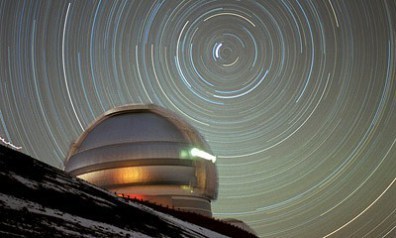 As the title would suggest, my third and fourth articles have just been published over at Universe Today. First off, let me assure people that I plan to post a link to UT in the near future so I don’t feel the need to do this every time a new article comes out. But since this is still a new experience to me, I naturally feel the need to share whenever a new one is published.
As the title would suggest, my third and fourth articles have just been published over at Universe Today. First off, let me assure people that I plan to post a link to UT in the near future so I don’t feel the need to do this every time a new article comes out. But since this is still a new experience to me, I naturally feel the need to share whenever a new one is published.
The first of the two, which was published on Monday, deals with a recent determination made about the source of the Moon’s water. This is based on research conducted by scientists over at the National Museum of Natural History in Paris. Back in 2009, India’s Chandrayaa-1 probe conducted a near-infrared survey of the Moon during a flyby that showed signs of surface water.
 After years of speculation that claimed that the surface water – which exists strictly in icy form – was deposited there by meteors and comets, the National Museum team concluded that its actually formed by solar wind interacting with oxygen in the Moon’s surface dust. Quite the odd little occurrence; but then again, even Mercury appears to have icy spots on it’s molten surface.
After years of speculation that claimed that the surface water – which exists strictly in icy form – was deposited there by meteors and comets, the National Museum team concluded that its actually formed by solar wind interacting with oxygen in the Moon’s surface dust. Quite the odd little occurrence; but then again, even Mercury appears to have icy spots on it’s molten surface.
www.universetoday.com/115215/water-on-the-moon-was-blown-in-by-solar-wind/
The second is about a recent collaboration between NASA and SpaceX. While the latter was testing their Falcon 9 rockets, NASA filmed the performance using Infrared cameras. The information gleamed from this is helping SpaceX to develop their reusable rocket, but will also help NASA to figure out how they will land habitats and heavy equipment on the surface of Mars.
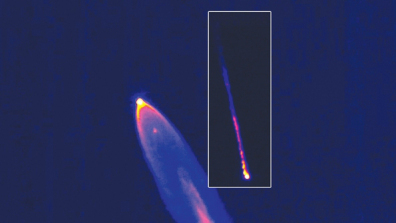 Sort of a win-win scenario, one that shows how the public and private sector are working together like never before to make the future of space exploration happen. And it’s another indication of just how serious NASA and its partners are in making a mission to Mars a reality.
Sort of a win-win scenario, one that shows how the public and private sector are working together like never before to make the future of space exploration happen. And it’s another indication of just how serious NASA and its partners are in making a mission to Mars a reality.
www.universetoday.com/115408/how-nasa-and-spacex-are-working-together-to-land-on-mars/
Feel free to check them out, and stay tuned for the next subject of interest: Dark Matter Emanating From The Sun!


October 19, 2014
The Fate of Humanity
 Welcome to the world of tomorroooooow! Or more precisely, to many possible scenarios that humanity could face as it steps into the future. Perhaps it’s been all this talk of late about the future of humanity, how space exploration and colonization may be the only way to ensure our survival. Or it could be I’m just recalling what a friend of mine – Chris A. Jackson – wrote with his “Flash in the Pan” piece – a short that consequently inspired me to write the novel Source.
Welcome to the world of tomorroooooow! Or more precisely, to many possible scenarios that humanity could face as it steps into the future. Perhaps it’s been all this talk of late about the future of humanity, how space exploration and colonization may be the only way to ensure our survival. Or it could be I’m just recalling what a friend of mine – Chris A. Jackson – wrote with his “Flash in the Pan” piece – a short that consequently inspired me to write the novel Source.
Either way, I’ve been thinking about the likely future scenarios and thought I should include it alongside the Timeline of the Future. After all, once cannot predict the course of the future as much as predict possible outcomes and paths, and trust that the one they believe in the most will come true. So, borrowing from the same format Chris used, here are a few potential fates, listed from worst to best – or least to most advanced.
1. Humanrien: Due to the runaway effects of Climate Change during the 21st/22nd centuries, the Earth is now a desolate shadow of its once-great self. Humanity is non-existent, as are many other species of mammals, avians, reptiles, and insects. And it is predicted that the process will continue into the foreseeable future, until such time as the atmosphere becomes a poisoned, sulfuric vapor and the ground nothing more than windswept ashes and molten metal.
Due to the runaway effects of Climate Change during the 21st/22nd centuries, the Earth is now a desolate shadow of its once-great self. Humanity is non-existent, as are many other species of mammals, avians, reptiles, and insects. And it is predicted that the process will continue into the foreseeable future, until such time as the atmosphere becomes a poisoned, sulfuric vapor and the ground nothing more than windswept ashes and molten metal.
One thing is clear though: the Earth will never recover, and humanity’s failure to seed other planets with life and maintain a sustainable existence on Earth has led to its extinction. The universe shrugs and carries on…
2. Post-Apocalyptic: Whether it is due to nuclear war, a bio-engineered plague, or some kind of “nanocaust”, civilization as we know it has come to an end. All major cities lie in ruin and are populated only marauders and street gangs, the more peaceful-minded people having fled to the countryside long ago. In scattered locations along major rivers, coastlines, or within small pockets of land, tiny communities have formed and eke out an existence from the surrounding countryside.
Whether it is due to nuclear war, a bio-engineered plague, or some kind of “nanocaust”, civilization as we know it has come to an end. All major cities lie in ruin and are populated only marauders and street gangs, the more peaceful-minded people having fled to the countryside long ago. In scattered locations along major rivers, coastlines, or within small pockets of land, tiny communities have formed and eke out an existence from the surrounding countryside.
At this point, it is unclear if humanity will recover or remain at the level of a pre-industrial civilization forever. One thing seems clear, that humanity will not go extinct just yet. With so many pockets spread across the entire planet, no single fate could claim all of them anytime soon. At least, one can hope that it won’t.
3. Dog Days: The world continues to endure recession as resource shortages, high food prices, and diminishing space for real estate continue to plague the global economy. Fuel prices remain high, and opposition to new drilling and oil and natural gas extraction are being blamed. Add to that the crushing burdens of displacement and flooding that is costing governments billions of dollars a year, and you have life as we know it.
The world continues to endure recession as resource shortages, high food prices, and diminishing space for real estate continue to plague the global economy. Fuel prices remain high, and opposition to new drilling and oil and natural gas extraction are being blamed. Add to that the crushing burdens of displacement and flooding that is costing governments billions of dollars a year, and you have life as we know it.
The smart money appears to be in offshore real-estate, where Lillypad cities and Arcologies are being built along the coastlines of the world. Already, habitats have been built in Boston, New York, New Orleans, Tokyo, Shanghai, Hong Kong and the south of France, and more are expected in the coming years. These are the most promising solution of what to do about the constant flooding and damage being caused by rising tides and increased coastal storms.
In these largely self-contained cities, those who can afford space intend to wait out the worst. It is expected that by the mid-point of the 22nd century, virtually all major ocean-front cities will be abandoned and those that sit on major waterways will be protected by huge levies. Farmland will also be virtually non-existent except within the Polar Belts, which means the people living in the most populous regions of the world will either have to migrate or die.
No one knows how the world’s 9 billion will endure in that time, but for the roughly 100 million living at sea, it’s not a going concern.
4. Technological Plateau:
 Computers have reached a threshold of speed and processing power. Despite the discovery of graphene, the use of optical components, and the development of quantum computing/internet principles, it now seems that machines are as smart as they will ever be. That is to say, they are only slightly more intelligent than humans, and still can’t seem to beat the Turing Test with any consistency.
Computers have reached a threshold of speed and processing power. Despite the discovery of graphene, the use of optical components, and the development of quantum computing/internet principles, it now seems that machines are as smart as they will ever be. That is to say, they are only slightly more intelligent than humans, and still can’t seem to beat the Turing Test with any consistency.
It seems the long awaited-for explosion in learning and intelligence predicted by Von Neumann, Kurzweil and Vinge seems to have fallen flat. That being said, life is getting better. With all the advances turned towards finding solutions to humanity’s problems, alternative energy, medicine, cybernetics and space exploration are still growing apace; just not as fast or awesomely as people in the previous century had hoped.
Missions to Mars have been mounted, but a colony on that world is still a long ways away. A settlement on the Moon has been built, but mainly to monitor the research and solar energy concerns that exist there. And the problem of global food shortages and CO2 emissions is steadily declining. It seems that the words “sane planning, sensible tomorrow” have come to characterize humanity’s existence. Which is good… not great, but good.
Humanity’s greatest expectations may have yielded some disappointment, but everyone agrees that things could have been a hell of a lot worse!
5. The Green Revolution: The global population has reached 10 billion. But the good news is, its been that way for several decades. Thanks to smart housing, hydroponics and urban farms, hunger and malnutrition have been eliminated. The needs of the Earth’s people are also being met by a combination of wind, solar, tidal, geothermal and fusion power. And though space is not exactly at a premium, there is little want for housing anymore.
The global population has reached 10 billion. But the good news is, its been that way for several decades. Thanks to smart housing, hydroponics and urban farms, hunger and malnutrition have been eliminated. The needs of the Earth’s people are also being met by a combination of wind, solar, tidal, geothermal and fusion power. And though space is not exactly at a premium, there is little want for housing anymore.
Additive manufacturing, biomanufacturing and nanomanufacturing have all led to an explosion in how public spaces are built and administered. Though it has led to the elimination of human construction and skilled labor, the process is much safer, cleaner, efficient, and has ensured that anything built within the past half-century is harmonious with the surrounding environment.
This explosion is geological engineering is due in part to settlement efforts on Mars and the terraforming of Venus. Building a liveable environment on one and transforming the acidic atmosphere on the other have helped humanity to test key technologies and processes used to end global warming and rehabilitate the seas and soil here on Earth. Over 100,000 people now call themselves “Martian”, and an additional 10,000 Venusians are expected before long.
Colonization is an especially attractive prospect for those who feel that Earth is too crowded, too conservative, and lacking in personal space…
6. Intrepid Explorers: Humanity has successfully colonized Mars, Venus, and is busy settling the many moons of the outer Solar System. Current population statistics indicate that over 50 billion people now live on a dozen worlds, and many are feeling the itch for adventure. With deep-space exploration now practical, thanks to the development of the Alcubierre Warp Drive, many missions have been mounted to explore and colonizing neighboring star systems.
Humanity has successfully colonized Mars, Venus, and is busy settling the many moons of the outer Solar System. Current population statistics indicate that over 50 billion people now live on a dozen worlds, and many are feeling the itch for adventure. With deep-space exploration now practical, thanks to the development of the Alcubierre Warp Drive, many missions have been mounted to explore and colonizing neighboring star systems.
These include Earth’s immediate neighbor, Alpha Centauri, but also the viable star systems of Tau Ceti, Kapteyn, Gliese 581, Kepler 62, HD 85512, and many more. With so many Earth-like, potentially habitable planets in the near-universe and now within our reach, nothing seems to stand between us and the dream of an interstellar human race. Mission to find extra-terrestrial intelligence are even being plotted.
This is one prospect humanity both anticipates and fears. While it is clear that no sentient life exists within the local group of star systems, our exploration of the cosmos has just begun. And if our ongoing scientific surveys have proven anything, it is that the conditions for life exist within many star systems and on many worlds. No telling when we might find one that has produced life of comparable complexity to our own, but time will tell.
One can only imagine what they will look like. One can only imagine if they are more or less advanced than us. And most importantly, one can only hope that they will be friendly…
7. Post-Humanity: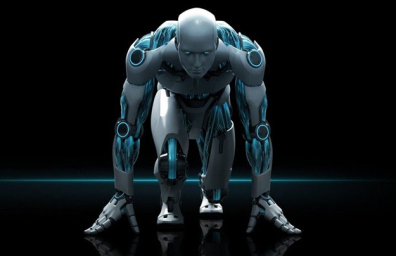 Cybernetics, biotechnology, and nanotechnology have led to an era of enhancement where virtually every human being has evolved beyond its biological limitations. Advanced medicine, digital sentience and cryonics have prolonged life indefinitely, and when someone is facing death, they can preserve their neural patterns or their brain for all time by simply uploading or placing it into stasis.
Cybernetics, biotechnology, and nanotechnology have led to an era of enhancement where virtually every human being has evolved beyond its biological limitations. Advanced medicine, digital sentience and cryonics have prolonged life indefinitely, and when someone is facing death, they can preserve their neural patterns or their brain for all time by simply uploading or placing it into stasis.
Both of these options have made deep-space exploration a reality. Preserved human beings launch themselves towards expoplanets, while the neural uploads of explorers spend decades or even centuries traveling between solar systems aboard tiny spaceships. Space penetrators are fired in all directions to telexplore the most distant worlds, with the information being beamed back to Earth via quantum communications.
It is an age of posts – post-scarcity, post-mortality, and post-humansim. Despite the existence of two billion organics who have minimal enhancement, there appears to be no stopping the trend. And with the breakneck pace at which life moves around them, it is expected that the unenhanced – “organics” as they are often known – will migrate outward to Europa, Ganymede, Titan, Oberon, and the many space habitats that dot the outer Solar System.
Presumably, they will mount their own space exploration in the coming decades to find new homes abroad in interstellar space, where their kind can expect not to be swept aside by the unstoppable tide of progress.
8. Star Children: Earth is no more. The Sun is now a mottled, of its old self. Surrounding by many layers of computronium, our parent star has gone from being the source of all light and energy in our solar system to the energy source that powers the giant Dyson Swarm at the center of our universe. Within this giant Matrioshka Brain, trillions of human minds live out an existence as quantum-state neural patterns, living indefinitely in simulated realities.
Earth is no more. The Sun is now a mottled, of its old self. Surrounding by many layers of computronium, our parent star has gone from being the source of all light and energy in our solar system to the energy source that powers the giant Dyson Swarm at the center of our universe. Within this giant Matrioshka Brain, trillions of human minds live out an existence as quantum-state neural patterns, living indefinitely in simulated realities.
Within the outer Solar System and beyond lie billions more, enhanced trans and post-humans who have opted for an “Earthly” existence amongst the planets and stars. However, life seems somewhat limited out in those parts, very rustic compared to the infinite bandwidth and computational power of inner Solar System. And with this strange dichotomy upon them, the human race suspects that it might have solved the Fermi Paradox.
If other sentient life can be expected to have followed a similar pattern of technological development as the human race, then surely they too have evolved to the point where the majority of their species lives in Dyson Swarms around their parent Sun. Venturing beyond holds little appeal, as it means moving away from the source of bandwidth and becoming isolated. Hopefully, enough of them are adventurous enough to meet humanity partway…
_____
Which will come true? Who’s to say? Whether its apocalyptic destruction or runaway technological evolution, cataclysmic change is expected and could very well threaten our existence. Personally, I’m hoping for something in the scenario 5 and/or 6 range. It would be nice to know that both humanity and the world it originated from will survive the coming centuries!


Bad New from Mars: First Colonists Doomed!
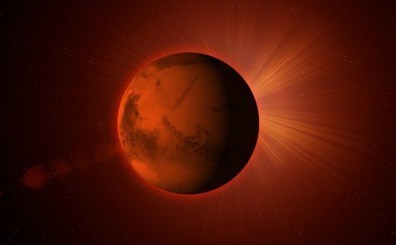 With the exploration of Mars continuing apace and a manned missions looming, there has been an explosion of interest in the idea of one day settling the planet. As the non-profit organization known as Mars One can attest, many people are interested in becoming part of a mission to colonize the Red Planet. In fact, when they first went public, some 200,000 people signed on to become part of the experience.
With the exploration of Mars continuing apace and a manned missions looming, there has been an explosion of interest in the idea of one day settling the planet. As the non-profit organization known as Mars One can attest, many people are interested in becoming part of a mission to colonize the Red Planet. In fact, when they first went public, some 200,000 people signed on to become part of the experience.
The fact that the trip would be one-way and that the plans for getting them there did not yet exist was not an deterrent. But if a recent study from MIT is to be believed, those who choose to go will and have the experience televised will be in for a rather harsh experience. According to a feasibility study produced by researchers at the Institute, the plan has potentially deadly and astronomically expensive flaws.
 After analyzing the Mars One mission plan, the MIT research group found that the first astronaut would suffocate after 68 days. The other astronauts would die from a combination of starvation, dehydration, or incineration in an oxygen-rich atmosphere. The analysis also concludes that 15 Falcon Heavy launches – costing around $4.5 billion – would be needed to support the first four Mars One crew.
After analyzing the Mars One mission plan, the MIT research group found that the first astronaut would suffocate after 68 days. The other astronauts would die from a combination of starvation, dehydration, or incineration in an oxygen-rich atmosphere. The analysis also concludes that 15 Falcon Heavy launches – costing around $4.5 billion – would be needed to support the first four Mars One crew.
The technology underpinning the mission is rather nebulous; and indeed, that’s where the aerospace researchers at MIT find a number of potentially catastrophic faults. While the technology to set up a colony on Mars does technically exist, most of it is at a very low technology readiness level (TRL) and untested in a Mars-like environment. And the prediction that things will be worked out with time and crowdfunding does not appear to be sufficient.
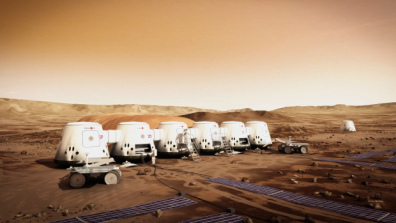 Mars One will rely heavily on life support and in-situ resource utilization (ISRU) – squeezing water from Martian soil and oxygen from the atmosphere. But these technologies are still a long way off large-scale, industrial use by a nascent human colony on Mars. NASA’s next Mars rover will have an ISRU unit that will make oxygen from the Red Planet’s atmosphere of CO2 – but that rover isn’t scheduled to launch until 2020, just two years before the planned launch of Mars One.
Mars One will rely heavily on life support and in-situ resource utilization (ISRU) – squeezing water from Martian soil and oxygen from the atmosphere. But these technologies are still a long way off large-scale, industrial use by a nascent human colony on Mars. NASA’s next Mars rover will have an ISRU unit that will make oxygen from the Red Planet’s atmosphere of CO2 – but that rover isn’t scheduled to launch until 2020, just two years before the planned launch of Mars One.
Originally, Mars One’s sign-up list included some 200,000 candidates. That number has now been whittled down to 705 – a fairly even mix of men and women from all over the world, but mostly the US. Several teams of four astronauts (two men, two women) will now be assembled, and training will begin. The current plan is to send a SpaceX Falcon Heavy rocket carrying the first team of four to Mars in 2022 – just eight years from now.
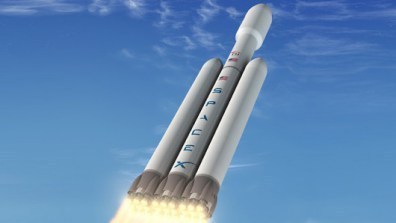 The whole thing will be televised as a reality TV show, an instrinsic part of the plan since much of the funding is expected to come from media sponsors and advertisers. In the interim, a number of precursor missions – supplies, life-support units, living units, and supply units – will be sent to Mars ahead of the human colonizers. More colonists will be sent fairly rapidly thereafter, with 20 settlers expected by 2033.
The whole thing will be televised as a reality TV show, an instrinsic part of the plan since much of the funding is expected to come from media sponsors and advertisers. In the interim, a number of precursor missions – supplies, life-support units, living units, and supply units – will be sent to Mars ahead of the human colonizers. More colonists will be sent fairly rapidly thereafter, with 20 settlers expected by 2033.
The new feasibility study was led by Sydney Do, a PhD candidate at the Massachusetts Institute of Technology who has done similar studies on other space missions. Do and his team ran a computer simulation based on publicly available information about the Mars One plan and the kinds of technologies it would rely on. The researchers entered data about the crew’s age, weight and activities to find out how much food, oxygen and water they would need.
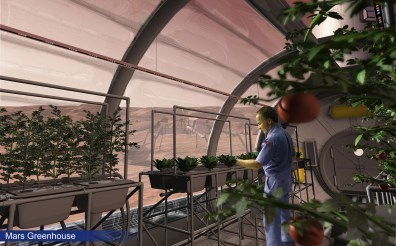 They took into account information from Mars One, such as its plan that “food from Earth will only serve as emergency rations” and the astronauts will mainly eat fresh food they grow themselves. The simulation monitored conditions in the Mars One habitat over 26 months – the amount of time between spaceships from Earth that would resupply them – or until the death of a crew member, whichever came first.
They took into account information from Mars One, such as its plan that “food from Earth will only serve as emergency rations” and the astronauts will mainly eat fresh food they grow themselves. The simulation monitored conditions in the Mars One habitat over 26 months – the amount of time between spaceships from Earth that would resupply them – or until the death of a crew member, whichever came first.
The results of their study were presented in a paper at the International Astronomic Union conference in Toronto last month. They suggest that serious changes would need to be made to the plan, which would either call for the astronauts to grow all their plants in a unit isolated from the astronauts’ living space to prevent pressure buildup in the habitats, or import all food from Earth instead of growing it on Mars.
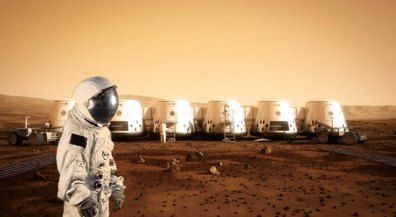 The researchers recommend the latter, as importing all the necessary food along with the first wave of colonists (not including the costs of development, operations, communications, and power systems) would cost $4.5 billion and require 15 Falcon 9 Heavy Rockets to transport it. Comparatively, flying all the equipment needed for the astronauts to grow their own food indefinitely which cost roughly $6.3 billion.
The researchers recommend the latter, as importing all the necessary food along with the first wave of colonists (not including the costs of development, operations, communications, and power systems) would cost $4.5 billion and require 15 Falcon 9 Heavy Rockets to transport it. Comparatively, flying all the equipment needed for the astronauts to grow their own food indefinitely which cost roughly $6.3 billion.
On top of all that, Do and his research staff have concluded that the project will not be sustainable financially. While Mars One says each subsequent manned mission will cost $4 billion, Do’s study found that each mission would cost more than the one before, due to the increasing number of spare parts and other supplies needed to support an increasing number of people.
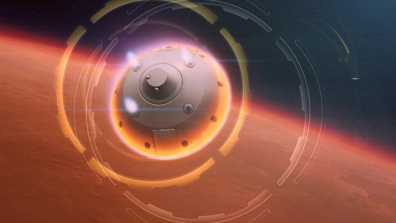 Naturally, Mars One replied that they are not deterred by the study. CEO and co-founder Bas Landorp – who helped develop the mission design – said the plan was based on the company’s own studies and feedback from engineers at aerospace companies that make space systems, such as Paragon Space Development and Lockheed Martin. He added that he and his people are “very confident that our budgets, timelines and requirements are feasible”.
Naturally, Mars One replied that they are not deterred by the study. CEO and co-founder Bas Landorp – who helped develop the mission design – said the plan was based on the company’s own studies and feedback from engineers at aerospace companies that make space systems, such as Paragon Space Development and Lockheed Martin. He added that he and his people are “very confident that our budgets, timelines and requirements are feasible”.
In any case, the study does not claim that the plan is bogus, just that it may be overreaching slightly. It’s not unreasonable to think that Mars One could get people to Mars, but the prospects for gradually building a self-sustaining colony is a bit farfetched right now. Clearly, more time is needed to further develop the requisite technologies and study the Martian environment before we start sending people to live there.
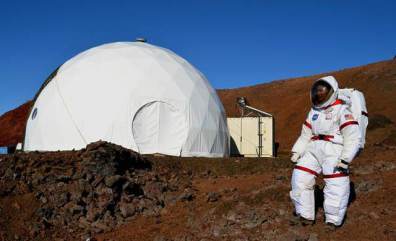 Oh well, people can dream can’t they? But the research and development are taking place. And at this point, it’s a foregone conclusion that a manned mission to Mars will be happening, along with additional robot missions. These will help lay the groundwork for eventual settlement. It’s only a question of when that could happen…
Oh well, people can dream can’t they? But the research and development are taking place. And at this point, it’s a foregone conclusion that a manned mission to Mars will be happening, along with additional robot missions. These will help lay the groundwork for eventual settlement. It’s only a question of when that could happen…
Sources: cbc.ca, extremetech.com, web.mit.edu


October 16, 2014
The Future is Here: Light-Bending Invisibility Cloaks!
 Invisibility cloaks are fast becoming a reality. That is to say, they are moving out of the realm of science fiction and the theoretical and into the realm of science fact. However, issues remain when it comes to developing this technology for real-world applications. Outside of adaptive camouflage that merely allow objects to blend into the background, true invisibility cloaks suffer from the problem of angles.
Invisibility cloaks are fast becoming a reality. That is to say, they are moving out of the realm of science fiction and the theoretical and into the realm of science fact. However, issues remain when it comes to developing this technology for real-world applications. Outside of adaptive camouflage that merely allow objects to blend into the background, true invisibility cloaks suffer from the problem of angles.
To break it down, invisibility cloaks are based on the scientific principle of bending light around an object, thereby rendering it invisible to sight. The problem with every device based on this principle built to date is that it only worked if both the viewer and whatever was cloaked remained still. This, of course, is not entirely practical since it means that a cloaked object would only be invisible from one angle.
 However, the latest effort to create a true cloak – developed at the University of Rochester – not only overcomes some of the limitations of previous devices, but relies on inexpensive, readily available materials in a novel configuration. For the first time ever, researchers have made a cloaking device that works multidirectionally in three dimensions and uses no specialized equipment, but four standard lenses.
However, the latest effort to create a true cloak – developed at the University of Rochester – not only overcomes some of the limitations of previous devices, but relies on inexpensive, readily available materials in a novel configuration. For the first time ever, researchers have made a cloaking device that works multidirectionally in three dimensions and uses no specialized equipment, but four standard lenses.
As well as at least partially solving the viewpoint problem, the Rochester cloak also leaves the background undisturbed, without any warping, as has appeared in other devices. As Joseph Choi, a professor of physics at Rochester University John Howell, explained:
There’ve been many high tech approaches to cloaking and the basic idea behind these is to take light and have it pass around something as if it isn’t there, often using high-tech or exotic materials. This is the first device that we know of that can do three-dimensional, continuously multidirectional cloaking, which works for transmitting rays in the visible spectrum.
 In order to both cloak an object and leave the background undisturbed, the researchers determined the lens type and power needed, as well as the precise distance to separate the four lenses. To test their device, the off-the-shelf lenses were placed at such a distance from each other so as to allow the light to act in specific ways – first focusing it down to a fine point through one lens, then again through the next, and then repeated.
In order to both cloak an object and leave the background undisturbed, the researchers determined the lens type and power needed, as well as the precise distance to separate the four lenses. To test their device, the off-the-shelf lenses were placed at such a distance from each other so as to allow the light to act in specific ways – first focusing it down to a fine point through one lens, then again through the next, and then repeated.
This bends the light so that an object in the ring-shaped cloaking field is not visible to a person peering through the array. To be sure, they placed the object being viewed through the lenses in front of a grid background, and then shifted the viewing angle. In all cases, with the grid background appeared perfectly normal, with no discontinuity appearing behind the cloaked object.
 Their simple configuration improves on other cloaking devices, but it’s not perfect. As Choi explained, the the cloak bends light and sends it through the center of the device, so the “on-axis region cannot be blocked or cloaked.” This means that the cloaked region is shaped like a doughnut. In addition, the cloak has edge effects, but these can be reduced by using larger lenses, and the team has some more complicated designs to address the other issues.
Their simple configuration improves on other cloaking devices, but it’s not perfect. As Choi explained, the the cloak bends light and sends it through the center of the device, so the “on-axis region cannot be blocked or cloaked.” This means that the cloaked region is shaped like a doughnut. In addition, the cloak has edge effects, but these can be reduced by using larger lenses, and the team has some more complicated designs to address the other issues.
For the time being, the technology isn’t exactly workable as far as Predator-style invisibility cloaks are concerned. However, Howell and Choi had some more benign applications in mind, such as allowing surgeons to operate without their view being obstructed by their own hands. Also, such a device could be used to allow truck drivers or even regular commuters see through their vehicle’s blind spots.
And, because the setup is so simple, anyone can grab some lenses and give it a try. You can find instructions for doing so on the Rochester University website, and a paper describing the research on arXiv. And of course, the University of Rochester was sure to provide a video of the cloak being tested out. Check it out below:
Sources: cnet.com, arxiv.org, rochester.edu


Second Article Published at Universe Today!
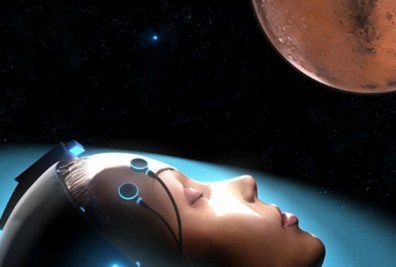
“Sleeping to Mars” concept, by SpaceWorks
Good news! My second article, which deals with the development of deep-space hibernation, just went public over at Universe Today! This one was especially fun to research, since it deals with a subject that is science fiction gold! Whether it’s from 2001: A Space Odyssey, the Alien franchise, Halo, Avatar, or the literature of Alastair Reynolds, the idea of astronauts going into cryogenic suspension has been well-explored over the past few decades.
And now, NASA is collaborating with a private aerospace company called SpaceWorks to research the possibility of using such a procedure when it sends astronauts to Mars and beyond. The advantages are numerous, from cost-cutting to ensuring that astronauts don’t go all nutter-butters during the many, many months (or even years) that it takes to drift through space.
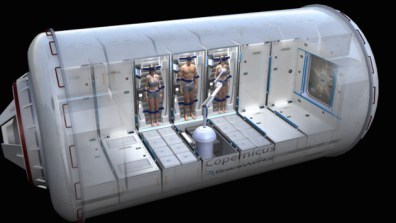 As seems to be the case more and more these days, researchers and planners are getting serious about it. Much like manned missions to Mars, colonizing Mars, a settlement on the Moon, the Space Elevator, or exploratory missions to Europa, science fiction is fast becoming science fact. Man, am I happy to be alive right now!
As seems to be the case more and more these days, researchers and planners are getting serious about it. Much like manned missions to Mars, colonizing Mars, a settlement on the Moon, the Space Elevator, or exploratory missions to Europa, science fiction is fast becoming science fact. Man, am I happy to be alive right now!
Come and check out the full article at:
www.universetoday.com/115265/nasa-investigating-deep-space-hibernation-technology/


October 14, 2014
News from Space: We’re Going to Mars!
 As part of their desire to once again conduct launches into space from US soil, NASA recently awarded commercial space contracts worth $6.8 billion to Boeing and SpaceX. But beyond restoring indigenous spaceflight capability, NASA’s long-term aim is clearly getting a manned mission to Mars by 2030. And in assigning the necessary money to the companies and visionaries willing to help make it happen, they just might succeed.
As part of their desire to once again conduct launches into space from US soil, NASA recently awarded commercial space contracts worth $6.8 billion to Boeing and SpaceX. But beyond restoring indigenous spaceflight capability, NASA’s long-term aim is clearly getting a manned mission to Mars by 2030. And in assigning the necessary money to the companies and visionaries willing to help make it happen, they just might succeed.
As per the agreement, Boeing will receive $4.2 billion to finance the completion of the CST-100 spacecraft, and for up to six launches. Meanwhile, SpaceX is receiving $2.6 billion for its manned Dragon V2 capsule, and for up to six launches. NASA expressed excitement its collaboration with both companies, as it frees the agency up for bigger projects — such the development of its own Space Launch System (SLS).
 One person who is sure to be excited about all this is Elon Musk, SpaceX founder, CEO, and private space visionary. With this big infusion of cash, he has apparently decided that it’s time to bring his plans for Mars forward. Ever since 2007, Musk has indicated a desire to see his company mount a manned mission to Mars, and now he may finally have the resources and clout to make it happen.
One person who is sure to be excited about all this is Elon Musk, SpaceX founder, CEO, and private space visionary. With this big infusion of cash, he has apparently decided that it’s time to bring his plans for Mars forward. Ever since 2007, Musk has indicated a desire to see his company mount a manned mission to Mars, and now he may finally have the resources and clout to make it happen.
These plans include flying astronauts to Mars by 2026, almost a decade before NASA thinks it will. By late 2012, he even spoke about building a Mars Colony with a population in the tens of thousands, most likely established sometime during the 2020’s. As of this past year, he has also revealed details about a Mars Colonial Transporter (MCT), an interplanetary taxi that would be capable of ferrying 100 people at a time to the surface.
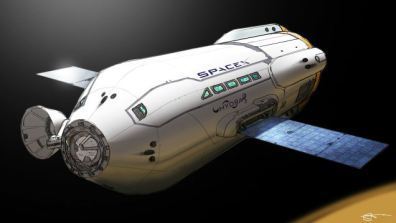
Fan concept art of the MCT
And then in February of this year, SpaceX began developing the MCT’s engines. Known as the Raptor, this new breed of large engine reportedly has six times the thrust of the Merlin engines that power the second stage of the Falcon 9 rocket. Now that the company has the financial resources to dream big, perhaps the MCT might move from the development stage to prototype creation.
And there is certainly no shortage of desire when it comes to sending people to the Red Planet. Together with Mars Society president Robert Zubrin, and Mars One co-founder Bas Lansdorp, crowdfunded organizations are also on board for a manned mission. The case for settling it, which Musk himself endorses, is a good one – namely, that planting the seed of humanity on other worlds is the best way to ensure its survival.
 And as Musk has stated many times now, a manned mission Mars is the reason there is a SpaceX. Back in 2001, while perusing NASA’s website, he was perturbed to find that the space agency had nothing in the way of plans for a mission to Mars. And the best time to go is probably in about 15 or 20 years, since Mars will be at its closes to Earth by then – some 58 million kilometers (36 million miles).
And as Musk has stated many times now, a manned mission Mars is the reason there is a SpaceX. Back in 2001, while perusing NASA’s website, he was perturbed to find that the space agency had nothing in the way of plans for a mission to Mars. And the best time to go is probably in about 15 or 20 years, since Mars will be at its closes to Earth by then – some 58 million kilometers (36 million miles).
During this window of opportunity, the travel time between Earth and Mars will be measured in terms of months rather than years. This makes it the opportune time to send the first wave of manned spacecraft, be they two-way missions involving research crews, or one-way missions involving permanent settlers. Surprisingly, there’s no shortage of people willing to volunteer for the latter.
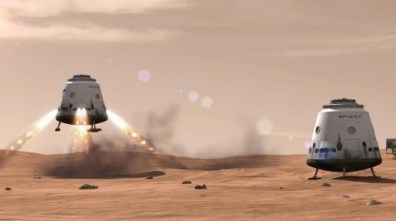 When Mars One posted its signup list for their proposed mission (which is slated for 2025), they quickly drew over 200,000 applicants. And this was in spite of the fact that the most pertinent details, like how they are going to get them there, remained unresolved. Inspiration Mars, which seeks to send a couple on a round trip to Mars by 2021, is similarly receiving plenty of interest despite that they are still years away from figuring out all the angles.
When Mars One posted its signup list for their proposed mission (which is slated for 2025), they quickly drew over 200,000 applicants. And this was in spite of the fact that the most pertinent details, like how they are going to get them there, remained unresolved. Inspiration Mars, which seeks to send a couple on a round trip to Mars by 2021, is similarly receiving plenty of interest despite that they are still years away from figuring out all the angles.
In short, there is no shortage of people or companies eager to send a crewed spaceship to Mars, and federal agencies aren’t the only ones with the resources to dream big anymore. And it seems that the technology is keeping pace with interest and providing the means. With the necessary funding now secured, at least for the time being, it looks like the dream may finally be within our grasp.
Though it has yet to become a reality, it looks like the first Martians will actually come from Earth.
Sources: extremetech.com, (2), sploid.gizmodo.com, mars.nasa.gov





